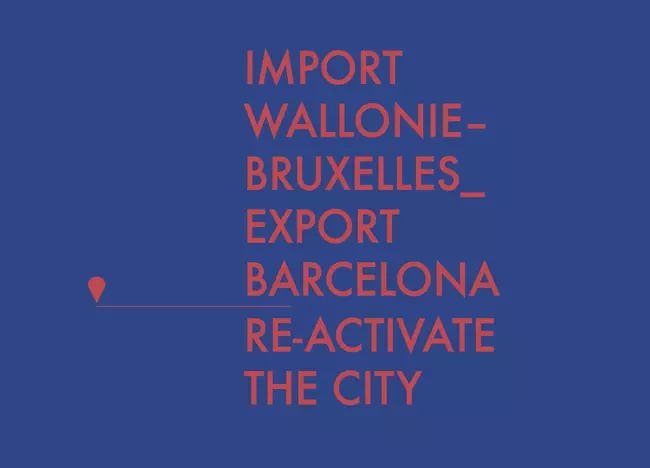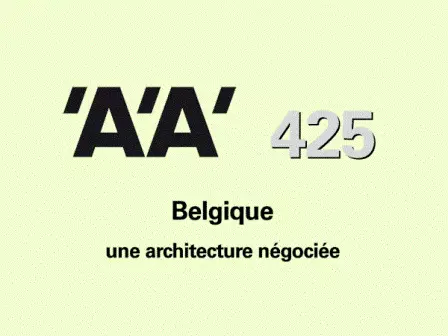- Posts
Published on 21/01/2015
Carte blanche: H2A - "The international experience of a Walloon office"

© Wallonie-Bruxelles Architectures "International collaboration is a perilous exercise that calls for appropriate means to be put in place. Is it possible to work with a big name in architecture? What role to take in the creative process?
In 1988, when the exhibition dedicated to deconstructivist architects was held at the MOMA, I was a first year architecture student. Names such as Frank Gehry, Peter Eisenman, Zaha Hadid, Rem Koolhaas and... Daniel Libeskind were only starting to make an impression on me.
Ten years later, as my career as an architect was just taking off, Daniel Libeskind was completing the Jewish Museum in Berlin. I was struck by this architecture, impressed by the sheer relevance, by the dramatic tension of these broken lines, these successions of oppressive spaces, the omnipresence of the void that imposes its emotional power. This is an Architecture that conveys meaning. It embodies the darkest moments of our history and it challenges us, without ever ceasing to move us. It never crossed my mind that, one day, I could be working with the man behind one of the major architectural works of the twentieth century, even in the very distant future.
An architect’s career is the stuff of encounters and coincidences, of opportunities that need to be seized. Sometimes you have to be bold and dare to take up the challenge when the occasion arises. After completing our design for the Environmental Competence Centre of the Forem Initialis (Energy Award 2005), a web giant got in touch with us and asked us to build their first data center outside the United States. We took up the challenge and, for five years, discovered the Anglo-Saxon approach to architectural design. Thanks to the time difference, working with partners based on the other side of the Atlantic makes it possible to have twenty-four hour days. But to make a success of it, it is essential to establish effective communication and structure the information so that the work is fully understood by the various stakeholders. Document exchange platforms are set up so that everyone can have the latest up-to-date plans and documents. Daily reporting and weekly video conferences make it possible to take stock of the situation and address issues that need to be discussed. The project took five years and what started off as a challenge ended up being a very rich experience. We overcame the language barrier and developed a number of tools that have completely changed our approach to an architectural project.
It was during the project to build the H&M Logistics Centre that we were given another opportunity to apply the methods acquired, even if they had to be adapted to the working philosophy of a Swedish company. In late 2010, CIT BLATON contacted us with a proposal to participate in a design competition with a major American firm... Its identity remained a mystery for several days. Who could it possibly be? This question haunted us. Quickly, the mist dispersed and things took on a concrete shape, marking the beginning of a wonderful adventure for H2A. The competition was for the future convention centre in Mons and we were going to participate, in partnership with Studio Daniel Libeskind. We did have a few initial reservations, especially as regards our exact role in the project? Were we just being brought on board to play the "little helpers"?
Things started moving quickly. Daniel Libeskind’s generosity, energy and enthusiasm were contagious within the team. Our fears were quickly allayed. Everyone had the feeling of working on something important. The weeks, months passed by and our Belgian-American team could practically work continuously. There were no shortage of sleepless nights but we put together a very complete project to present to the jury. On the eve of the presentation, every minute detail was reviewed with Daniel Libeskind: in order to convince, we ourselves must be convinced and show it. It worked like a charm and our design was chosen. Construction work began less than a year later. Building the dream still called for a great deal of innovation and resourcefulness. But everyone got down to business, from the contractors to the workers, who had also caught the same syndrome, throwing themselves into their work and gradually bringing the imagined spaces to life. It was a complex project, littered with surprises, with requests for changes being made while the work was already in progress. More than ever, communication was essential and regardless of the 6000 kilometres that separated us, the team spirit that had developed over time was tangible.
Today, after four years of hard work, the MICX (Mons International Congress Xperience) has opened its doors. While for us, as architects, it marks the end of a great adventure, it is also and above all a confirmation. The extraordinary experience of this international collaboration, even if it requires a total investment and the appropriate means to be put in place, drives development, exchanges and a global outlook. When it goes well, it can generate architecture.”
By Pascal DASPREMONT - H2A20 January 2015
- BilletsAuteur
Audrey ContessePublished on 09/10/2018
-
Allier procédure et processus
"La scène belge est gage de qualité, d’humanisme et de poésie" peut-on lire dans le numéro 425 de l’Architecture d’Aujourd’ hui, dévolu à l [...]
- BilletsAuteur
Emmanuelle BornePublished on 06/07/2018
-
Belgitopie
Faut-il se fier aux expositions internationales, a fortiori à la Biennale d’architecture de Venise, pour appréhender les mouvements de fond et enjeux [...]



